Introductory Story: Growing up in Taylor Street’s Little Italy
www.TaylorStreetArchives.com
Vince Romano
The primary purpose of the Taylor Street Archives is to record those memories that capture both the essence and spirit of growing up on Taylor Street. An equally important objective is to memorialize the names of those who had emigrated to Taylor Street from the shores of southern Italy and their offspring (the first and second generation Italian Americans) who grew up in Taylor Street’s Little Italy. The archives will be that sacred ground which will preserve the story of a time, a place, and a people. A people that were and can never be again. A story preserved for generations to visit and recall how it was for us in the beginning. A story that will be told by those who lived it.
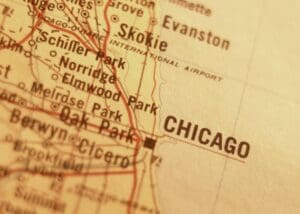
I was asked by the Near West Gazette to write an overview of my experiences in growing up in Little Italy prior to their publishing the remaining stories contained in the Taylor Street Archives—(www.TaylorStreetArchives.com). Their assumption was that my experiences could better prepare the reader for later stories to be published by them from the Archives.
I choose those episodes in my life that I felt captured the flavor of growing up in Taylor Street’s Little Italy. It is biased in favor of my perceptions of the neighborhood and its people. At times, it may seem to an outsider that I’m rambling. To those of us who were Taylor Street bred, however, the cohesiveness of those once upon a time stories is readily apparent.
Shooting from the hip, here is a collage of those memories and perceptions:
*For openers, nicknames in our neighborhood were so prevalent you rarely knew the real name of anyone unless they were in the same classroom with you. Here are a few: Bugsy, Steady Eddie, Crazy Migee, Vincenzo Paso (that’s me), Rabbit, Frog Eyes, Bunny, Moe, Bug House, Hammer Nose, Mouse, Wacker, Tank, Slick, Zanzo, Butter Ball, Johnnie Boy, KoKo, Key Key, Mother’s Doll, Dead-eye, Little Man, Hindu, Shoes, Scarps (means shoes also), Five Joke Books, and a host of other names that fit their characters.
*I don’t mean to be offensive to anyone, but, as others before me had noted, our Taylor Street culture could not be confused with Shangri-La or the Garden of Eden. The American Dream was far removed and rarely infused in the culture of the original Italian immigrants that arrived early in the 20th century. We were an immigrant community and subjected to those same socio-economic forces that impacted upon other immigrant communities. (During the mass migration at the turn of the 20th century, Chicago’s neighborhoods were ethnically defined.) Those stories must therefore, by definition, also be included in our Archives.
I suspect there were several reasons why this strain of violence existed in most immigrant communities. Unique to the Italian immigrant community was the Black Hand. Although eventually extinguished as a result of the courageous actions of our parents and others, the mystique of the Black Hand was carried over from the old country and was ingrained in our psyche. In addition, many first generation Italian-Americans grew up during a time when organized crime was rampant in America. The Italian-American contingent of that phenomenon, although late in arriving, eventually dominated and consolidated bootlegging and other illegal ventures such as gambling. As an aside: all those nefarious activities are now legal and, allegedly, are necessary to support our schools.
The members of the notorious 42 Gang were Taylor Streeters plus—virtually all 42 of them. Their members became the primary source of Chicago’s Organized Crime.
There are writers, historians, psychologists and sociologist who have suggested that venturing out from homes in these inner city immigrant enclaves each day often resurrected primal memories of survival instincts. There were books written about Blackboard Jungles, Asphalt Jungles, Mean Streets, etc. There are those who might conclude that one would be hard pressed to find a “Street” more reflective than Taylor Street of the combined theme of those novels. One would also be hard pressed to find a “Street” whose peoples--nurtured through the prohibition era, the Great Depression, and the two Great Wars by their immigrant parents-- achieved successes well beyond what our sociological soothsayers had predicted.
*Many of us who grew up on Taylor Street had their harrowing experiences. I’ll share one of mine with you and move on. One Saturday afternoon we were having a sandwich at Figs’ (given that nickname, I suspect, because of acne wrinkles) beef stand on Taylor and Newberry. One of the Halsted and Arthington guys, Johnny Boy, suddenly came tearing around the corner with 3 unfamiliar Latinos just a few steps behind him. As they bounced off the beef stand, the Latinos picked off the 4 foot long iron spits that were used to cook the sausage. Fast forward a minute or two and 40 feet above the concrete sidewalk below, Johnnie, hanging off the side of the Orrico’s porch with one hand, was doing all he could to avoid being stabbed. My arrival, instead of resulting in two teenagers being stabbed to death or thrown to their deaths, resulted in all 3 Latinos, now fearful of their safety, cautiously backing down the 3 flights of stairs as I stood between them and Johnny Boy.

Like many other Taylor made guys, I look back at harrowing experiences such as this, and ask, “Was it an inherited courage or a sense of honor that motivated us; was it a primeval instinct that provoked such bold responses; or was it just simply something that evolved as a result of growing up in Taylor Street’s Little Italy?”
Jane Addams’ theory of symbolic interactionism, which evolved as part of the Hull House phenomenon, may well be the answer to that question. Her theory of symbolic interactionism is the enduring part of her legacy. It exposes the depth of understanding she possessed as a sociologist and student of human behavior.
*Willard Motley was one of the many resident artists at Hull house. He utilized the neighborhood, its people, and its geography to write his best selling novel, Knock on Any Door. His book, recognized as a treatise of sorts on human behavior, impacted upon every major theory on human development. His name and his novel are mentioned elsewhere in these Archives as he provides us with an insight into the complexities of human behavior and how it is that we become what we become…especially as it pertained to those of us growing up on Taylor Street. Willard Motley used our neighborhood it's geography and it's people. 1113 South Peoria Street is the address but he gave to his main character, Nick Romano.
END OF PART ONE
INTRODUCTORY STORY
PART TWO
*I was born in an apartment above Granato’s restaurant located at the SW corner of Taylor and Peoria. (I later learned that No Boy, whose athletic skills made him a neighborhood icon of sorts, lived, a decade earlier, in the same apartment in which I was born.) The celebrities who dined at Granato’s included the likes of Frank Sinatra. Cinder Stadium’s home plate was only a few feet from Granata’s kitchen door where we placed our orders for veal scaloppini and meatball sandwiches after a long day of playing ball. Shortly afterward, my parents moved across the street to 1013 South Peoria Street—the same address that Willard Motley choose to use for the main character of his book, Knock on Any Door.
*We all had chores. Our games were often interrupted by a yell from an open window by one of our parents. One or 2 of the participants would dash off in response to what may have been a forgotten chore, or a chore that had not been properly done.

My parents had 4 sons (Raymond, Dominick, and me (Vincent) were but a year apart). The fourth son, Mario, was born 6 years after me. Our chores, as in most families, were well defined: Taking care of the coal stove, throwing out the garbage, scrubbing the 3 flights of wooden stairs every week-end, picking up our homemade bread from the local bakery, and a host of other chores that linked us to depression era children of ethnic parents.
*My brother Mario died at age 15 when the nurses refused to enter his room to stop the bleeding from a cut from a broken glass on his hospital tray. They had misdiagnosed him as having spinal meningitis. My father died shortly after, at age 52, while being treated at Mother Cabrini Hospital. (Mother Cabrini Hospital, now a condo development, no longer services the health needs of the community.) I recall two smartly dressed (suit and tie) Metropolitan Life agents sitting at our kitchen table offering my mother a $6,000 settlement on my father’s $10,000 policy: “If you go to court, you might not even get the $6,000.”
*Mike Favia was our block precinct captain. I remember the day his son, Vito Favia, joined the Marines. I also remember the day the gold star was placed in the Favia window. Vito was killed during the invasion of Iwo Jima. John Basilone, the only enlisted man to be awarded both the Medal of Honor and the Nave Cross, also paid the ultimate price on the beaches of Iwo Jima.
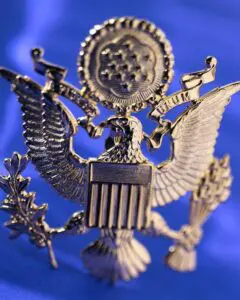
Petie “Scardone” Salerno, who lived across the street from Vito Favia and me on Peoria Street, fought on those same beaches. Petie, arguably the toughest guy in the toughest neighborhood in America, returned home unscathed… at least physically.
Vito Favia’s sisters, Marietta and Rosemarie, were the only family members alive when, three decades later (1970s), the media power structure closed its eyes to the following statement to be made on national TV during the airing of Allistaire Cooke’s documentary, America: The Immigrant, "Representative of the contributions made by Italian Americans is Alphonse Capone.” One must wonder where were those who were designated to act on behalf of those of us who were too poor and too unconnected to challenge Alistaire Cooke’s message. The silence was deafening.
*Our street, like the rest of Taylor Street, was really crowded…wall-to-wall people. In the evening, kids played on the streets while their parents sat on the front steps of their homes. The women had their own agenda while the men debated the issues of the day. They were evenly divided as to whether or not Mussolini was good for Italy. “After all, Mussolini did get the trains to run on time.”
Most buildings on my street were 3 stories high with 6 apartments. Many of the apartments housed more than one generation. One vivid memory I carry with me to this day is that of my grandfather --well into his 70s, with this huge shovel over his shoulder-- coming home after a long day’s work to his spaghetti dinner and a glass (or two) of home made wine. We ran to him each night to greet him. A kiss on his hand brought the welcome reward of a penny which bought us three Mary Janes or a hand full of paper candy. Last I saw of his wine stained glass was in a box stored in my basement. I would give the world to be able to pass that purple stained glass on to my children and their children’s children.
*My dad, Raymond, was a house painter and an entrepreneur of sorts. When I inquired why he dismissed the polite and likeable man who came to our home to do his taxes, he said, “Vincenzo, if he was willing to tell me how much money my neighbor made, he will tell my neighbors anything and everything about me.” My dad was an astute observer of human nature. Another memorable moment with my dad was captured in the following dialogue, shortly after he purchased a brand new Buick Roadmaster.
Dad: “Vincenzo, what means Roadmaster?”
Me: “Roadmaster? It means something like…master of the road.”
Dad: With a blissful look that was rare for him, “Ah! Master of the road!”
That memory is resurrected with each viewing of the opening scene of Mario Puzo’s The Godfather: “I believe in America. America has given me…”
Want another vignette from my father that reflected the aura of the times? Early television (circa 1950s) was dominated by wrestling. Benito Gardini was a short, squatty wrestle who often was matched against towering opponents with names like Man Mountain Dean. Before leaving the house on most Saturday nights, my dad would beckon me to stay a moment or two to watch Benito Gardini using his guile and superior intelligence beat his larger opponents. With every neat maneuver, Benito Gardini, with his index finger up to his forehead, reminded the audience that it was his wit and intelligence that enabled him to outmaneuver his powerful opponents. My dad and his generation of Italian immigrants were as proud of Benito Gardini as we were of Joe DiMaggio and Rocky Marciano.
END OF PART TWO
INTRODUCTORY STORY
PART THREE
*My mom, Josephine, for much of her life was the matron at Sheridan Park. She was viewed as the surrogate mother for the multitude of kids that had attended the park. Decades after she had passed on, when I won the BMW at the Shrine’s annual feast, the word that went through the crowd was, “Josie’s son won the BMW.”
My mom came over from Acerra, Italy with her mother and older sister in 1914, during WWI. She suffered a concussion while on the boat. While in a coma, she recalls the captain telling the doctor that they may have to toss her body overboard if she showed no improvement by morning. She obviously survived and, along with her sister, brother and mother, met up with her father on Taylor Street, Chicago’s port-of-call for Chicago’s Italian American immigrants.
My dad, Raymond Romano, was a refugee from the port town of Torre del Greco on the western shores of the Mediterranean. He jumped ship in Galveston, Texas in 1920 six years after my mother had had emigrated in 1914. He managed to find his way to Chicago’s Little Italy where he met my mother. I had always felt that, by my just by being here, I had already won the lottery.

*The boundaries of Taylor Street’s Little Italy ran from the Chicago River on the east (400 west) out to Western Avenue (2400 west). Between Halsted Street (800 west) and Morgan Street (1000 west) were 4 pool rooms. They were legally set up as Social Athletic Clubs (S.A.C.s). Each club represented a distinct neighborhood. Little Italy was saturated with these clubs. A story of these clubs as fiefdoms, commanding the allegiance of those who lived within their boundaries, is in the Archives and is scheduled to appear in this column at a future date. One club, the Morgan Fads SAC, produced two, nearly consecutive, world champion gin rummy players. Believe it or not, the third player who went to the annual Las Vegas tournament, Hammer Nose, was just a hair short of making it 3 world champions. Three guys, from just one of the scores of clubs that saturated the landscape, from the river on the east on out to Western Avenue, were considered among the top gin rummy players in the world. And they may not have even been the best of what Taylor Street had to offer.
*For the record, I met my wife, Tomasine Garippo, for the first time, at Hull House’s Bowen Country Club when she was 15 years old. She only lived 3 blocks from me, on Halsted and Arthington, across from the Guardian Angel and Dante Schools. When my cousin confided in me that he was moving “way out west,” he was moving to Garibaldi Street—only 5 blocks further west.
*Most readers would be familiar with the games we played. Most of our games, in our section of Taylor Street’s Little Italy, were played in the Goodrich School play yard. (Goodrich School’s Cinder Stadium is an article all by itself and scheduled to be published at a future date.) The full description of those games will be found in a later article and will be memorialized in the Taylor Street Archives as well. There is one game, Baby in the Hole, which is worth mentioning here because it makes a statement about the character of those of us who grew up in Taylor Street’s Little Italy. Babies was a game where the lone loser stood against the wall and the winners took turns throwing a “league ball” at him from just 50 feet away. (We called baseballs “league balls” to distinguish them from the 16 inch softball that was prevalent in our neighborhood.) If you missed, you had to shield the lone loser with your body. That was the only protection the victim had. The memory of playing tag on Goodrich School’s 3 story fire escapes or the 6 inch ledge that goes around the Field Museum with its 30 foot drop to the concrete pavement below still brings on anxiety attacks.
*We played tackle football with the iron fence out-of-bounds. (Dante School Yard also had their iron fence as their sideline marker.) A historic neighborhood football game, which took place in the Dante School Yard, can be found elsewhere in these Archives. There was no need for any replay cameras to determine whether or not someone had gone out-of-bounds. The sound of bouncing off the iron fence was all the proof that was needed.
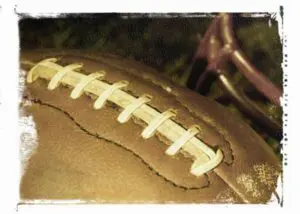
*I can hear KoKo, while playing peck and stick, saying, “Mother’s Doll, this one is going right through your window.” And it did. Four (4) stories high. How about this: Mother’s Doll (his real name was Freddie) is climbing down from his 4 story fire escape to join us. His mother, spotting him from her window: “Freddie, if you fall, I’m gonna break your legs!”
*We had some tough guys in our piece of Little Italy. We had Golden Glove champions Richie Guererro and Jackie Corvino. Other Golden Glovers included Chickie LaPlaca, which is another story. Richie knocked Floyd Patterson out of the ring in one of his 204 amateur victories. Patterson later became heavyweight champion of the world. There were other Taylor Street bred guys who, while not having achieved similar measures of prominence, were much tougher than those who ventured out and returned with their laurels.
*Bobbie Salerno (Petie Scardone’s brother) lived across the street from me…Butchie Petrocelli lived above my mother on Aberdeen Street…Harry Aleman, I was told, was also born on Peoria Street. As an aside, I was Harry’s counselor when he was a camper at the Hull House Bowen Country Club. But these are stories to be told elsewhere, other than this introductory story.
* Goodrich schoolyard was the site of most of our athletic contests. There were 2 memorable fights of which I still have vivid memories. Jimmy Parilli, thanks to Hull House, discovered that he had the skills of an AAU wrestling champ. He and Dante “Bunny” DiMenna went at it in Goodrich School on a hot, dry, dusty summer day. The fight lasted hours. In the end, Bunny was hopelessly locked into a figure eight (8). Blood was streaming from his mouth, arm pits and nose. Overmatched, he did not back down. He fought the good fight against overwhelming odds. The memory of Bunny’s courageous stand has remained with me until this day. That’s when I first realized what being tough was all about. The other memorable battle that took place in the Goodrich School playground was between Anthony Laterza and me. That fight lasted the entire lunch period with neither of us landing (or even throwing) a punch.
END OF PART THREE
INTRODUCTORY STORY
PART FOUR
*Anthony Laterza was in my Goodrich School graduating class along with Nanette Partipillo and John “Deadeye” Lopez. Nanette sang “Long Ago and Far Away” for our graduation. I gave the graduation speech. Deadeye received the medal given by the American Legion each year to the outstanding boy and girl grammar school graduates. Nanette received a measure of notoriety when her husband was killed in a gangland style slaying while they were sitting on their front steps. Deadeye wound up in jail shortly after graduation and later died of unnatural causes. (It seemed that the Goodrich school graduates who won the American legion medal were either in jail or dead by age 18.)
A blue eyed, black haired Adonis, Anthony Laterza found his way to Hollywood. His good looks could only take him to the edge of the Hollywood scene. Decades later he revisited Taylor Street. We hugged Italian style and spent hours sharing old memories. It was obvious, from our time together, that his boyhood memories of growing up in our Taylor Street had remained shackled to the backroads of his mind. The years had been more than kind to him. One would be hard pressed to find anyone on the planet better looking than him. Shortly after that visit we heard that he had taken his own life.
*Another phenomenon that had its roots in Goodrich School was the “Fresh Air Room.” If you were lucky enough to be assigned to the Fresh Air Room for that week, you got all the milk you could drink and all of Miss Sangamon’s peanut butter sandwiches you could eat. (I still water at the mouth thinking about those sandwiches.) I suspect the theory at that time suggested that good nutrition and fresh air made you a better learner. I managed to get my share of failing grades and thus my share of assignments to the fresh air room.
*Federal studies (circa 1970s) pointed out that Italian-Americans were the lowest of all European ethnic groups in education, as measured by enrollment in college. Few of our generation’s Taylor Street Italians graduated high school. Most guys stayed in school just until they reached the legal age of 16. Quit before age16 and you did a stretch at Montefiore. The economics were such that many of us worked while going to school. Only a handful from my grammar school class graduated high school. It seemed to me that our grade schools were staffed with teachers who were programmed not to expect much of us because they were dealing with an inferior product. Only a small number of our first generation Italian Americans went on to college. And only a fraction of those managed to graduate.
I’m reminded of a quote from Anthony Sorrentino, off spring of one of our immigrant parents, reflecting the media’s success in the psychological genocide of a people: “That suffocating feeling of inferiority.”
*Many guys eventually got themselves jobs through their first ward precinct captains. An impressive number of those public service employees became police officers. The next most popular career seemed to be that of a truck driver. My brother, Dominick, quit high school at 16 and went to work for Coca Cola as a driver’s helper.
After a stint in the U.S. Navy, when he met his wife, Dominick returned to Coca Cola. He eventually attained the lofty position of District Sales Manager for Coca Cola. His odyssey as a high school dropout is representative of a number of our Taylor Street bred young men who achieved prominence despite their limited educational opportunities. His story, a eulogy of sorts, will appear later in these archives and is really the story of many other Taylor Street young men who rose to heights that our sociological soothsayers had never predicted for them.
My eldest brother, Raymond, did manage to graduate high school despite the demands placed upon him as a result of my father’s health. Like many other Taylor Street alumni before and after him, my eldest brother became a successful entrepreneur and business owner. Aside: One year, Ray managed to find the time to join his high school swimming team. He took home the silver medal in diving in the citywide swimming competition. The Chicago Public Schools is the largest schoolboy conference in America.
*We were the Peoria Flashes. When we played teams from other parts of Little Italy, our roster was bolstered with the guys from Newberry Street (one-half block east) and Sangamon Street (one-half block west). Whenever we played football at Sheridan Park, despite our ethnic bond, serious disputes would likely break out long before the game ended. When we played in the CYO basketball tournaments, the games, more often than not, were settled, not on the basketball court, but on the street as we were walking back to our section of Little Italy.
*One day we went to play the black kids at the boys’ club south of Roosevelt Road. (We grew up during ethnic times and we were an ethnically defined neighborhood.) They scheduled a basketball game with our Hull House team as a prelude to their Saturday night dance. Our Hull House team was leading by 3 points with one minute to play. That one minute lasted like an hour. Even though we scored every time we got the ball during those drawn out closing minutes, when the final score was officially announced, they had taken the lead. Prudence dictated not to challenge their math..
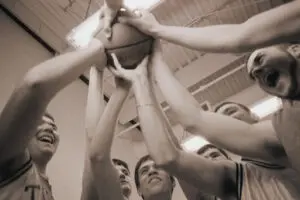
*Which brings to mind another episode of the many confrontations with the project residents. There was a heated dispute over money which led to their calling for “One-Eye.” In came One Eye. He only had one-eye and looked meaner than a junk yard dog. The rest of his face was so scarred that he looked like he fought pit bulls every morning before breakfast…with each fight coming out a draw. (But then, that is another story to be found later in the pages of these Taylor Street Archives)
*We had our share of encounters outside the neighborhood as well. One winter evening, about 20 guys from our club all piled into a truck to do battle with the gang on 18th and Halsted. When we piled out of the truck, I was immediately confronted by 3 guys. The remainder of our guys fought their way into the tavern. By the time they fought their way back to the truck and raced back to Taylor Street, I, unbeknownst to them, was battling one of my adversaries in a strange kitchen. It was a long and dangerous journey, on that bitter cold night, getting back to Taylor Street. Growing up on Taylor Street, we were obliged to defend our honor--to defend our turf--regardless of the risks.
END OF PART FOUR
INTRODUCTORY STORY
PART FIVE
*Goodrich School yard also served as a haven for the week-end dice games. A Chicago Police car pulled up every hour to collect their due. There were usually 3 games going at one time: the penny game; the nickel and dime game; and the game where quarters and dollar bills were bet. I remember shining shoes every Saturday mornings and returning in the afternoon with a pocket full of money to try my luck at the dice games. If I lost, I went back out with my shoeshine box. Greektown was the first stop on my route. The Greeks never tipped, even though you had to use a ton of polish on their boots. The young servicemen and the skid row residents were great tippers. To recoup my losses before I went home, I went directly to Madison Street (skid row) and worked my way through the Loop.
*The annual Italian feast celebrations for our section of Taylor Street’s Little Italy “cinque petso Santa Nicolo” were held on the Sangamon Street side of Goodrich School. On one occasion I lost all my shoeshine money to one of the “give me a dime and I’ll give you a dollar” carnival con artists. Once again, I was “back out with my shoeshine box.”
*Chicken Charlie (“No dime, no show!”) was a frequent visitor to our neighborhood. An elderly black man, he walked the neighborhood with a chicken and a piece of rope. As kids, we ran to him to see what new tricks he had taught his chicken. It was always the same trick:--his aging chicken struggling to balance itself on a rope.
*Theresa’s tavern---on Taylor between Newberry and Peoria streets--served an exclusive Mexican clientele. My bedroom was across the alley from the tavern. Mexican music, dipped in tequila, was drummed into my subconscious every Friday and Saturday night for the first 14 years of my life.
The Mexicans were the only other ethnic group that existed in any discernible numbers within the inner core of the Hull House neighborhood. Tacho, the leader and spokesman for the Zacatecas, organized a team boxing tournament pitting the Zacatecas against the Cecilia Boosters. The matches took place on Newberry Street by the Cecilia’s SAC. CYO and Golden Gloves boxers fared well in their matches. By the time they got to the final match, the victories by each side were fairly even. That final match was short lived as the deadlier punching had its toll. The Zacatecas heavyweight was forced to quit when a punch shattered his elbow.
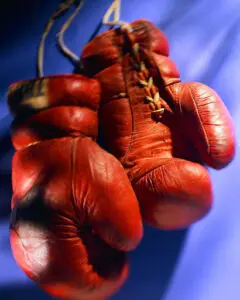
Although Mexicans and Italians were both teammates and opponents in their athletic activities, social integration was rare and virtually non-existent on a group scale. There were individual Mexicans who had become members of an Italian gang or club. I suspect a caste mentality rejected a reverse situation of individual Italians becoming members of a Mexican gang or club. There may have been a racist undertone that existed as well. If an Italian girl favored a Mexican boy, she was labeled: “Mexican lover!”
END OF PART FIVE
Introductory Story
PART SIX
*Hull House and Sheridan Park were the after-school institutions that helped to fill our non-school hours. Our end of Taylor Street went to Hull House. During the summer, we went to Sheridan Park’s swimming pool. Getting past the lifeguard was an ordeal. They repeatedly sent us back to the showers to scrub what appeared to them to be dirt on our heels. I guess those blue eyed, blond hair lifeguards never became aware of the fact that we had developed callouses on our heels from shoes that had long-ago been outgrown. As blossoming teenagers, we packed both Hull House and Sheridan Park for the Saturday shower ritual in preparation for a night on the town.
The Hull House game room was a daily regimen of playing pool, pick up sticks, and board games like Sorry and Monopoly while waiting for the gym to open. As teenagers, a monthly dance and co-ed club meetings were added to our schedule. The gymnasium held the most attraction for us. While it offered boxing, wrestling, tumbling and gymnastics--basketball commanded most of our attention. The rafters overhanging the basketball court prevented arched shots. Hence, we became line drive shooters, which was not an easy transition for visiting teams. Being over 6 feet tall I was often assigned to play with the smaller Mexican team. I recall one championship game as especially bitterly fought. During the ensuing brawl, also bitterly fought, my allegiance was with my teammates. Whatever records we set at Hull House are destined to stand forever as the gymnasium was torn down in the 1960s to make way for the UIC.

*My biggest thrill occurred when I was asked to play with the men’s team (the Wolverines) to represent Hull House in a citywide tournament. My being only 15 at the time was not a negative as one might assume. I had matured early. Yahte (he was Greek) and I were the only two “6 footers” on the Hull House team--probably the only six footers in all of Taylor Street. He and I were dominant players in our respective leagues. However, playing against outside teams with superior size, the action under the boards was exceptionally ferocious, especially for Yahte who was slight of built. All our Taylor Street teams had similar experiences, regardless of the sport, as six footers were rare in our ethnic neighborhood. Since Yahte was taller, he played center and I played forward. Shooting and driving from the outside, without five guys hanging on my arms each time I got the ball, was a blast. I had a great tournament, playing well over my head. Surprisingly, I was rewarded with being named to the citywide tournament’s all-star team. What a charge. It was a glorious time.
*Hull House’s Bowen Country Club (BCC) was a unique experience--a new environment with new rules. There was grass, a blue pool, folk dancing every evening, and overnight hikes to the lake. For most, if not all of us, it was the first time we slept in a bed all by ourselves. There were a lot of firsts for us at BCC. The Hull House summer camp was a complete change in environment and provided us an opportunity to find and be ourselves…to become something more than what our inner city experiences held in store for us. Very much, as in the cast in Wallace K. Kirkland’s 1924 world renowned photograph, Meet the “Hull House Kids,” the spectrum of identities making up the composition of the Hull House Summer Camp produced a similar range of careers. The paradox challenging our sociological soothsayers is the presence of future mob figures and future professors of law sharing the same summer camp experience. All participating, unknowingly, in a behavior modification experiment whose roots traced back to Jane Addams’ theory of symbolic interactionism.
Because of its uniqueness and the impact it had upon those who were fortunate enough to attend, the Bowen Country Club story has its own special place in the Taylor Street Archives. A must read for a deeper insight into the Taylor Street phenomenon. Use search engine for Bowen Country Club
END OF INTRODUCTORY STORY
vincent
